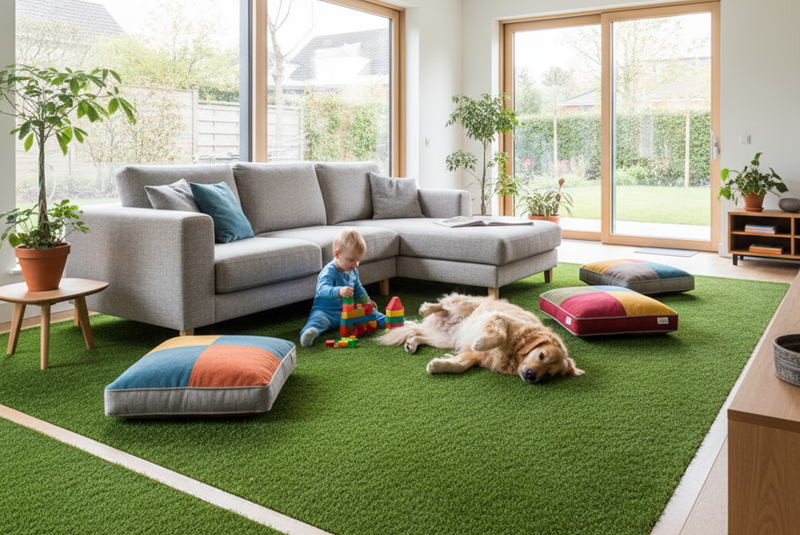Energy efficiency is a trend. It is a smart way to save money, reduce your environmental footprint, and create a more comfortable living space.
Whether planning a major renovation or looking for simple changes, this beginner’s guide will help you make practical, cost-effective, energy-efficient home improvements.
Just as the body needs recovery after exertion, a home benefits from recovery through strategic upgrades to its energy systems, ensuring long-term health and efficiency.
Why Energy Efficiency Matters
1. Save Money
Reducing energy waste can significantly lower your utility bills. Over time, the savings can pay for the cost of upgrades.
To know how much you can save switching to solar lighting check out this free solar lighting calculator
2. Environmental Impact
Energy-efficient homes consume less power, which means fewer greenhouse gas emissions. Every small step contributes to a healthier planet.
3. Improved Comfort
Better insulation, and efficient heating, and cooling systems can make your home more comfortable, no matter the season.
Key Areas for Energy-Efficient Improvements
1. Insulation Upgrades
- Proper insulation prevents heat loss in winter and keeps your home cool in summer.
- Focus on insulating your attic, walls, and floors for maximum efficiency.
- Materials like fiberglass, cellulose, or spray foam offer excellent thermal resistance.
2. Energy-Efficient Windows
- Double- or triple-pane windows reduce heat transfer, keeping indoor temperatures stable.
- Low-E (low emissivity) coatings can enhance insulation properties without blocking natural light.
- Seal any gaps or cracks around window frames to prevent drafts.
3. Smart Thermostats
- Programmable thermostats allow you to optimize heating and cooling schedules, reducing energy waste.
- Modern smart thermostats can learn your preferences and adjust settings automatically.
4. LED Lighting
- Replace incandescent bulbs with LED alternatives that use up to 75% less energy.
- LEDs last longer, reducing replacement costs and contributing to lower electricity bills.
5. Solar Energy Systems
- Install rooftop solar panels to generate clean, renewable energy.
- Solar water heaters are another efficient option, especially in sunny regions.
6. Efficient HVAC Systems
- Upgrade to ENERGY STAR-rated heating, ventilation, and air conditioning (HVAC) systems.
- Regularly maintain and clean filters to ensure peak performance.
Simple DIY Improvements
1. Weatherproofing
- Use weatherstripping and caulk to seal gaps around doors and windows.
- This prevents drafts and reduces the workload on your HVAC system.
2. Water Efficiency
- Install low-flow faucets, showerheads, and toilets to reduce water consumption.
- Fix leaks promptly to avoid water and energy waste.
3. Energy Recovery Ventilators (ERVs)
- Just like the human body needs recovery to function efficiently, homes can benefit from energy recovery. ERVs exchange stale indoor air for fresh outdoor air while retaining heat and energy, improving air quality and reducing energy use.
4. Smart Power Strips
- Use smart power strips to prevent phantom energy loss from devices in standby mode.
The Role of Recovery in Home Energy Systems
Much like recovery is vital to human health after exertion, homes also need periodic recovery to maintain peak performance. Energy-efficient upgrades act as the recovery process for your home, addressing inefficiencies and preventing long-term energy waste. Systems like energy recovery ventilators ensure that your home continues to “heal” itself, recycling energy effectively while improving indoor air quality.
Financial Incentives for Energy Efficiency
1. Tax Credits and Rebates
- Many governments offer incentives for energy-efficient home improvements, including tax credits for solar installations and rebates for insulation upgrades.
2. Energy Audits
- Hire a professional to conduct an energy audit. This will help identify areas for improvement and ensure you prioritize the most impactful upgrades.
3. Financing Options
- Look for green loans or financing programs to support your energy-efficiency projects.
FAQs About Energy-Efficient Home Improvements
What is the first step to making my home energy efficient?
Start by conducting an energy audit to identify areas of energy waste. From there, focus on low-cost improvements like sealing drafts and switching to LED lighting.
Can energy-efficient improvements increase home value?
Yes, energy-efficient upgrades can make your home more attractive to buyers and increase its market value.
Are solar panels worth it for a small home?
Yes, solar panels can be scaled to meet the energy needs of small homes, providing long-term savings and reducing reliance on the grid.
How can I reduce energy waste in the kitchen?
Use energy-efficient appliances, unplug devices when not in use, and avoid overusing heating or cooling systems.
What is an energy recovery ventilator, and do I need one?
An energy recovery ventilator (ERV) is a system that exchanges stale indoor air with fresh outdoor air while recovering energy. It’s particularly useful in tightly sealed, energy-efficient homes.
Conclusion
Energy-efficient home improvements are a win-win: they save you money, enhance your comfort, and reduce your carbon footprint.
By addressing key areas like insulation, systems, and lighting, you can transform your home into an eco-friendly haven that not only reduces energy consumption but also lowers utility costs, enhances comfort, and contributes to a more sustainable future.











